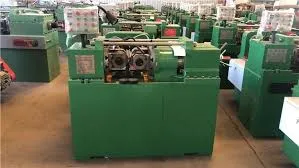
-
 Afrikaans
Afrikaans -
 Albanian
Albanian -
 Amharic
Amharic -
 Arabic
Arabic -
 Armenian
Armenian -
 Azerbaijani
Azerbaijani -
 Basque
Basque -
 Belarusian
Belarusian -
 Bengali
Bengali -
 Bosnian
Bosnian -
 Bulgarian
Bulgarian -
 Catalan
Catalan -
 Cebuano
Cebuano -
 Corsican
Corsican -
 Croatian
Croatian -
 Czech
Czech -
 Danish
Danish -
 Dutch
Dutch -
 English
English -
 Esperanto
Esperanto -
 Estonian
Estonian -
 Finnish
Finnish -
 French
French -
 Frisian
Frisian -
 Galician
Galician -
 Georgian
Georgian -
 German
German -
 Greek
Greek -
 Gujarati
Gujarati -
 Haitian Creole
Haitian Creole -
 hausa
hausa -
 hawaiian
hawaiian -
 Hebrew
Hebrew -
 Hindi
Hindi -
 Miao
Miao -
 Hungarian
Hungarian -
 Icelandic
Icelandic -
 igbo
igbo -
 Indonesian
Indonesian -
 irish
irish -
 Italian
Italian -
 Japanese
Japanese -
 Javanese
Javanese -
 Kannada
Kannada -
 kazakh
kazakh -
 Khmer
Khmer -
 Rwandese
Rwandese -
 Korean
Korean -
 Kurdish
Kurdish -
 Kyrgyz
Kyrgyz -
 Lao
Lao -
 Latin
Latin -
 Latvian
Latvian -
 Lithuanian
Lithuanian -
 Luxembourgish
Luxembourgish -
 Macedonian
Macedonian -
 Malgashi
Malgashi -
 Malay
Malay -
 Malayalam
Malayalam -
 Maltese
Maltese -
 Maori
Maori -
 Marathi
Marathi -
 Mongolian
Mongolian -
 Myanmar
Myanmar -
 Nepali
Nepali -
 Norwegian
Norwegian -
 Norwegian
Norwegian -
 Occitan
Occitan -
 Pashto
Pashto -
 Persian
Persian -
 Polish
Polish -
 Portuguese
Portuguese -
 Punjabi
Punjabi -
 Romanian
Romanian -
 Russian
Russian -
 Samoan
Samoan -
 Scottish Gaelic
Scottish Gaelic -
 Serbian
Serbian -
 Sesotho
Sesotho -
 Shona
Shona -
 Sindhi
Sindhi -
 Sinhala
Sinhala -
 Slovak
Slovak -
 Slovenian
Slovenian -
 Somali
Somali -
 Spanish
Spanish -
 Sundanese
Sundanese -
 Swahili
Swahili -
 Swedish
Swedish -
 Tagalog
Tagalog -
 Tajik
Tajik -
 Tamil
Tamil -
 Tatar
Tatar -
 Telugu
Telugu -
 Thai
Thai -
 Turkish
Turkish -
 Turkmen
Turkmen -
 Ukrainian
Ukrainian -
 Urdu
Urdu -
 Uighur
Uighur -
 Uzbek
Uzbek -
 Vietnamese
Vietnamese -
 Welsh
Welsh -
 Bantu
Bantu -
 Yiddish
Yiddish -
 Yoruba
Yoruba -
 Zulu
Zulu
Harmonizing HSN Codes for Thread Rolling Machine Production in Factories
Understanding Thread Rolling Machines and Their HSN Code in Manufacturing
In modern manufacturing, efficiency and precision are paramount. Among the various processes that enhance productivity, thread rolling is a standout method, particularly in the production of fasteners and precision components. Thread rolling machines, which facilitate this process, have become essential tools in factories worldwide. This article explores the significance of thread rolling machines and their corresponding HSN (Harmonized System of Nomenclature) codes, highlighting their role in manufacturing.
What is Thread Rolling?
Thread rolling is a cold-forming process that creates threads on metal components without removing material. Instead of cutting, this process displaces the material to form the desired thread profiles. It is known for producing high-strength threads with superior surface finishes compared to traditional machining methods. The process enhances the mechanical properties of the material, making it less prone to fatigue and stress.
Thread rolling machines utilize dies that press against the workpiece, moving it in either a reciprocating or rotary motion. The result is a tightly controlled process that not only improves production rates but also significantly reduces waste—an essential consideration in today's environmentally conscious manufacturing landscape.
The Importance of HSN Codes
HSN codes are standardized numerical codes used globally to classify goods for taxation and trade purposes. They simplify international trade by ensuring that products are categorized uniformly across different countries. For manufacturers, understanding the HSN code relevant to their products is crucial for compliance with tax regulations and for accurate reporting in customs declarations.
thread rolling machine hsn code factory

For thread rolling machines, the HSN code falls under the category of machines used for mechanical processing. While specific codes can vary by country, manufacturers typically reference the international nomenclature where thread rolling machinery is categorized under machinery used for shaping metal by deforming. This classification assists in identifying applicable tariffs, taxation rates, and import/export regulations.
Impact on Manufacturing Efficiency
Implementing thread rolling machines in a manufacturing setting significantly impacts efficiency and output. These machines operate at high speeds, allowing for mass production of threaded components in a relatively short time frame. The cold-forming nature of the process means that energy consumption is often lower than traditional machining, leading to cost savings for manufacturers.
Furthermore, the quality of the threads produced through rolling is often superior to that of cut threads. The process enhances the strength of the material while providing a smoother finish, reducing the need for secondary operations such as grinding or polishing. For industries that demand precision components, such as aerospace, automotive, and construction, the advantages of thread rolling machines are substantial.
Conclusion
In summary, thread rolling machines play a crucial role in modern manufacturing, offering efficient, high-quality production of threaded components. Understanding their HSN code not only aids in compliance with international trade regulations but also informs manufacturers about the classification of their machinery for taxation purposes. As industries increasingly prioritize efficiency and sustainability, thread rolling technology will likely continue to evolve, further enhancing productivity in manufacturing environments. These machines not only exemplify the advancements in engineering but also signify a commitment to quality and innovation in the manufacturing sector.
